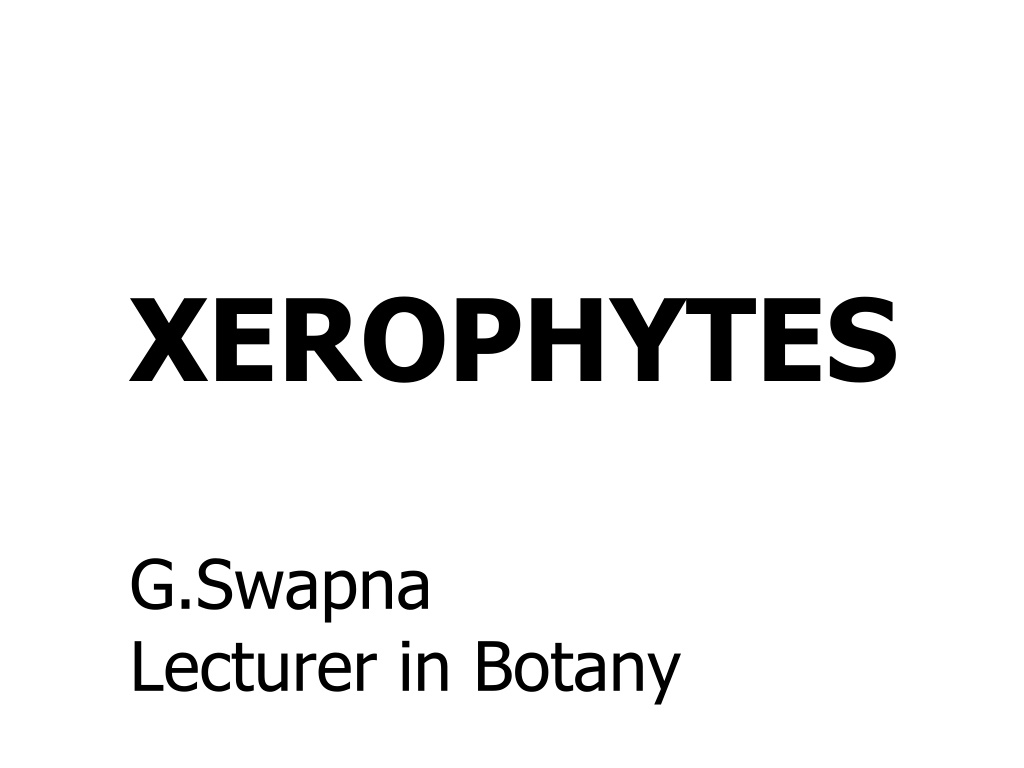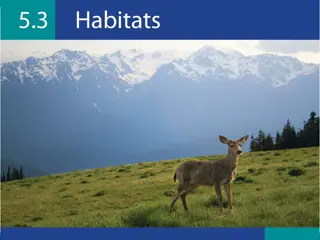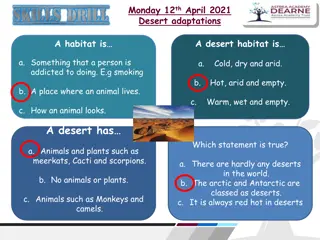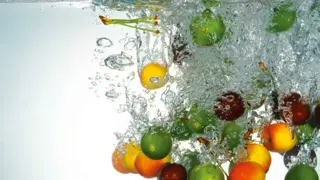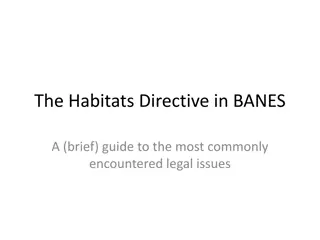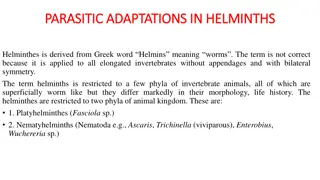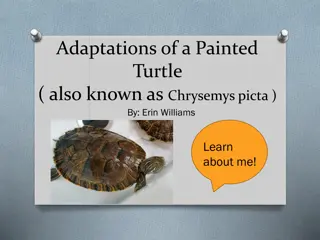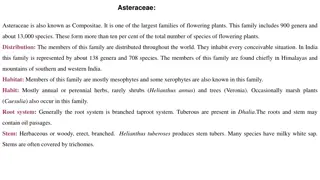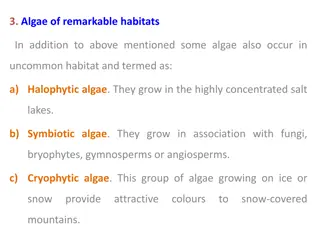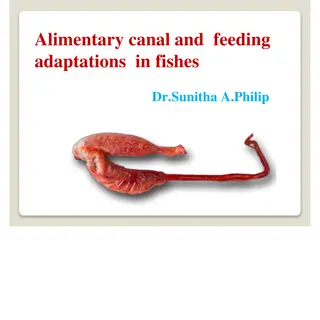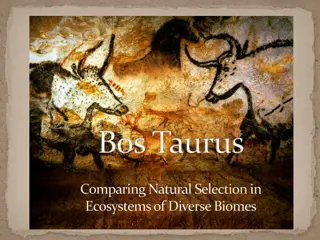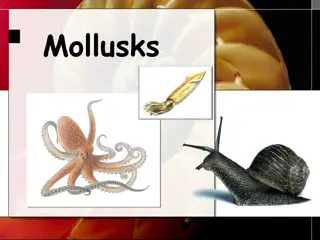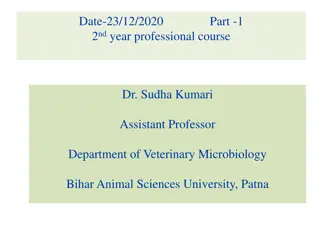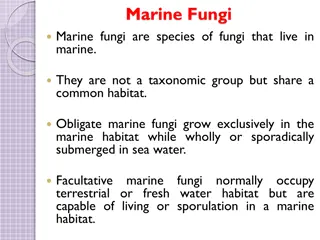Adaptations of Xerophytes in Different Habitats
Xerophytes, plants adapted to dry habitats, possess specific adaptations to prevent excessive water loss such as sunken stomata, presence of hairs, thick waxy cuticle, and rolled leaves. These adaptations help xerophytes thrive in arid conditions, maintaining humid air around stomata and maximizing water uptake through extensive roots. Cacti, being xerophytes, exhibit these key adaptations for survival.
Download Presentation

Please find below an Image/Link to download the presentation.
The content on the website is provided AS IS for your information and personal use only. It may not be sold, licensed, or shared on other websites without obtaining consent from the author. Download presentation by click this link. If you encounter any issues during the download, it is possible that the publisher has removed the file from their server.
E N D
Presentation Transcript
XEROPHYTES G.Swapna Lecturer in Botany
Plant adaptations to habitats Plants in different habitats possess different adaptations: Mesophytes: plants adapted to a habitat with adequate water Xerophytes: plants adapted to a dry habitat Halophytes: plants adapted to a salty habitat Hydrophytes: plants adapted to a freshwater habitat
Xerophytes possess some or all of these adaptations to prevent excessive water loss Stomata sunken in pits creates local humidity/decreases exposure to air currents; Presence of hairs creates local humidity next to leaf/decreases exposure to air currents by reducing flow around stomata; Thick waxy cuticle makes more waterproof impermeable to water;
Xerophytes possess some or all of these adaptations to prevent excessive water loss cont. Stomata on inside of rolled leaf creates local humidity/decreases exposure to air currents because water vapour evaporates into air space rather than atmosphere e.g. British Marram grass Fewer stomata decreases transpiration as this is where water is lost;
Xerophyte adaptations summary: Adaptation How it works Example thick cuticle stops uncontrolled evaporation through leaf cells small leaf surface area less surface area for evaporation conifer needles, cactus spines low stomata density smaller surface area for diffusion sunken stomata marram grass, cacti maintains humid air around stomata stomatal hairs (trichores) maintains humid air around stomata marram grass, couch grass rolled leaves marram grass, maintains humid air around stomata extensive roots maximise water uptake cacti
Left and right Epidermis of the cactus Rhipsalis dissimilis. Left: View of the epidermis surface. The crater-shaped depressions with a guard cell each at their base can be seen. Right: X-section through the epidermis & underlying tissues. The guard cells are countersunk, the cuticle is thickened. These are classic xerophyte adaptations.
